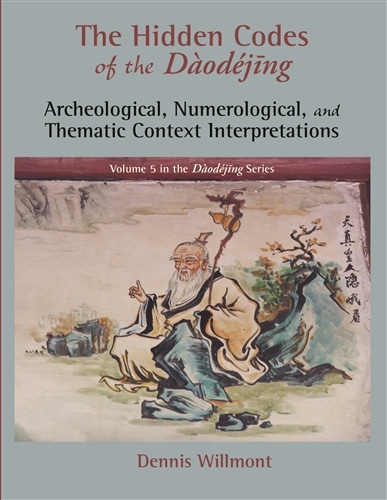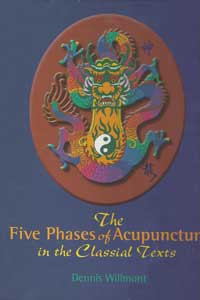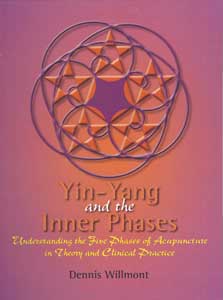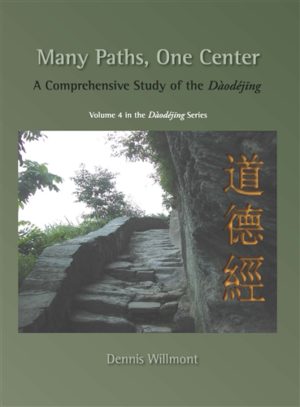The Hidden Codes of the Daodejing
Archeological, Numerological and Thematic context interpretations
- Verlag: Willmountain Press
- ISBN: 9780998742724
- 2017, 292 pages
75,00 €
inkl. MwSt.
plus Versandkosten
Abhängig von der Lieferadresse kann die MwSt. an der Kasse variieren.
Lieferzeit: ca. 5 - 10 Tage/days
Beschreibung
This volume is the fifth in a five-part series on the Dàodéjing. The third volume, The Dàodéjing, Daoism, and the Restoration of Humanity in the Asian Healing Arts, contains a large section on the Ancient Chinese cultural background of the text as well as a Complete translation of each of the eight-one chapters, including the Chinese characters from the Received Text of Wángbìs Hàn Dynasty version, and a commentary on each chapter based on the cultural background. The Received Text of Wángbì is the version from which all other prominent versions in China and around the World since at least the Míng Dynasty (1368-1644 CE) have been derived.
The fourth volume in this series, Many Paths, One Center: The Dàodéjing and the Worldview of Ancient China, provides a detailed presentation of the Thematic Context, which organizes the many important themes used in the Dàodéjing so that its underlying Principles can be better understood and coordinated with practical application to daily Life. Here in the present volume, we shall also include the theme of the evolution of the Ruler to the Heart of every person including the role of the Sage who connects the two. This important role of the Ruler can be understood on four different levels in the text: (1) the archaeological versions where different references to the Ruler were used, (2) the Thematic Context where the Ruler is associated with Political or Governmental Force, (3) a numerological interpretation of the eighty-one chapters where the different roles of the Ruler are symbolized, and (4) the Three Levels of Healing established by Táo Hóngjing in the fourth century CE where the role of the Ruler/Heart/Mind reaches the most comprehensive level of application.
The archaeological versions, Guodiàn ?? of 300 BCE and Mawángdui of 168 BCE, and discovered in 1993 and 1973, are the earliest Known versions of the text that we have today. The Guodiàn version was written during the Warring States Period on bamboo strips while the Mawángdui version was written during the Former Hàn Dynasty on silk banners so that slight character variations are found that are not present in the Received Text of Wángbì. While most of these variations are minimal, most of which indicate that these earlier texts were written for the Ruler, the Received Text included in its audience the educated literati and, by implication, the common ordinary person. These differences are accounted for as much by the political and educational changes made in the Hàn Dynasty as they were by the writing Materials available at the time. From the Warring States Period through the Former Hàn, texts were written on silken cloth or rolled bamboo slips, a technique that limited their availability. However, by the Later Hàn, when the Received Text of Wángbì was written, paper was invented so that the same texts were now available to a wider audience, especially the larger and emerging class of bureaucrats. Furthermore, by the Táng Dynasty (618-905 CE), when Laozi was deified by the first Táng Emperor, woodblock printing was invented, which made these texts, and others, much more available as more and more people began to read. At the same time, the earlier Zhou Dynasty concept of the Mandate of Heaven (tianmìng ??) evolved with the cooperation of Chinese Medicine to the extent where the Outer Ruler of the Kingdom also became a pertinent symbol for the Shén/Spirit of the Heart, which functioned in every person as the Ruler of the Body/Mind/Spirit within. The ideas in the Dàodéjing, then, came to be understood as advice given, not only to the Outer Ruler of the Kingdom, but also to the Inner Ruler of the Heart for Humanity as a Whole.
The Thematic Context is an organization of over two hundred fifty-three different terms used in the Dàodéjing into an overall Pattern from which the main Principles of the text can be understood on a more linear and comprehensive level. I discovered this system when I first translated the text from the original Chinese, which enabled me to see how different words were repeated throughout the text as well as throughout other related texts of Ancient China such as the Yìjing, the Chinese Medical texts, the Confucian texts, and other Daoist texts that used the same words to consistently convey ideas that were not perceptible by reading other western translations. I, then, organized these terms into five basic categories, which in themselves summarize the fundamental meaning of the text and the highly significant worldview that emerges from it. These are:
1. A Definition of Dào as both Source and Path
2. The Manifestation of Dào into the World
3. Human Nature, Virtue/Empowerment, and the Psycho-Spiritual Dimension of Humanity
4. The Fragmentation and Loss of Dào
5. The Embracing of Dào for the Restoration of Humanity
Please notice that, for the sake of clarity and to facilitate the learning process, all of these terms appear in Small Caps wherever they are used in the text.
Included in these terms are the Ruler, the Sage, the role of Numbers as an aspect of the Pattern/Template system of archetypes, and the Mandate of Heaven, which connects the evolution of the Ruler to the Heart of every person and makes the text not only more available, but also a requirement for everyone who wants to attain the goal of One Peaceful World. In addition, the Mandate of Heaven is also related to the Three levels of Healing, an idea introduced by the Máoshan Daoist and Chinese Medical practitioner, Táo Hóngjing (452-536 CE). These levels include the Symptomatic Level as the Lowest, the Preventive Level at the Middle, and the Fulfilling of Inner Potential at the Highest, which is directly related to the Mandate of Heaven as we shall see later in the section on the Thematic Context.
Autor
Bewertungen (0)
You must be <a href="https://www.naturmed.de/mein-konto/">logged in</a> to post a review.






Bewertungen
Es gibt noch keine Bewertungen.